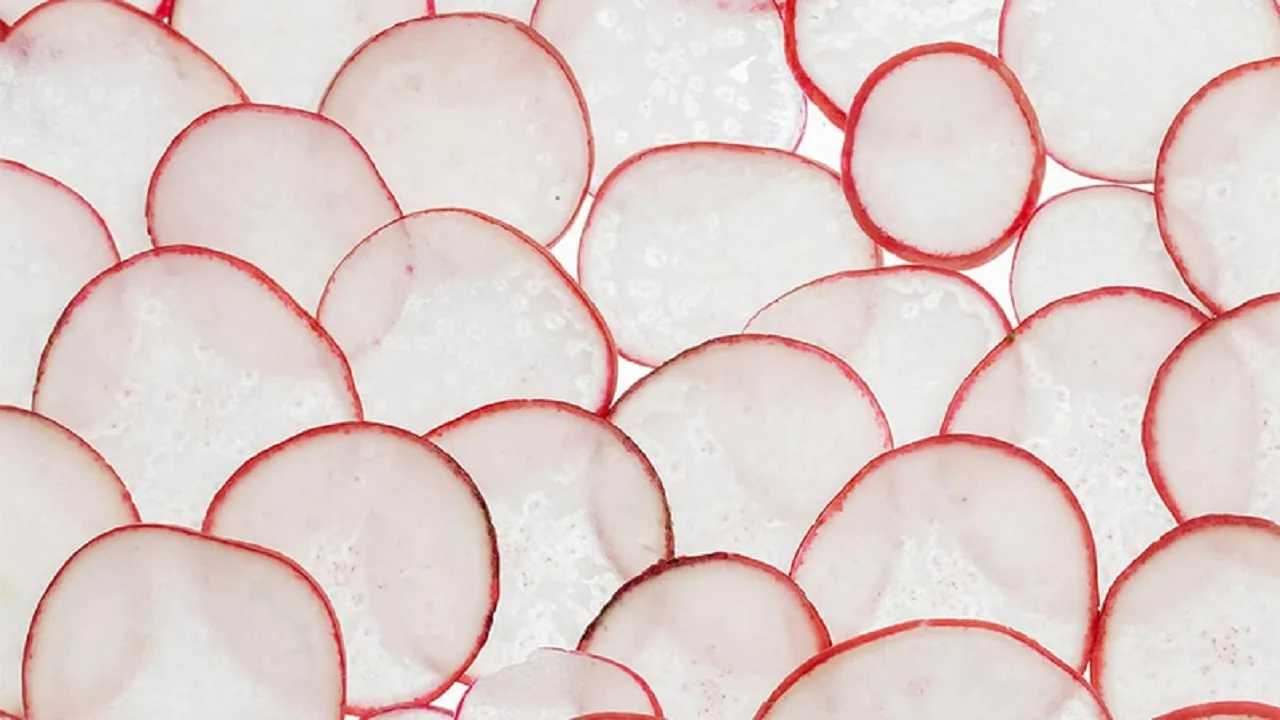Radish, one of the least valued root vegetables on the table but one of the most valued in traditional practices, can be stored for a long time by drying. We examine together how to dry and consume radish, which has benefits for inflammation, fever, and gall problems, as found in many studies. The details you will find in our article:
What is Radish?
Root vegetables that are rich in antioxidants, vitamin C, potassium and calcium, and are round or long tubers are called radishes. There are different types of radishes in different colors such as white and red. These vegetables, which belong to the Brassicaceae family, are frequently used especially in Asian cuisine. Radishes, which were preferred in medicine production in ancient times, can be consumed by drying or raw, as well as cooked. In our country, radish salads are usually found on tables in raw form, grated.
What are the Types of Radish?
The known radish varieties in our country are red, white and black radish. However, long options called horseradish can also be grown in our country. In addition, the variety called daikon, also known as Japanese radish, is more popular in Asia. We can detail the options that are more frequently preferred for drying radishes and that we encounter more frequently in Turkish cuisine:
Red radish
Red radishes with red skin and white flesh are distinguished by their sweet, peppery and sharp taste. Red types are preferred for drying radishes.
White Radish
White radish, which is white and greenish on the outside and red on the inside, is distinguished from horseradish at first glance with its round appearance. Also called watermelon radish, this root vegetable can also be consumed cooked. You can also see white radishes, known for their bitter taste, eaten sliced. Of course, white varieties are also used in drying radishes.
Black Radish
Black radishes are usually round and large, but the inside is usually white. Root vegetables with a spicy and earthy taste are often used in salads and as dried radishes.
What are the benefits of radish?
Since most of the studies on the benefits of radishes have been conducted on animals, much more studies are needed on its benefits for humans. However, we can get an idea about the benefits of radishes by talking about the results obtained in the test tube and on animals.
• Radishes contribute to the well-being of skin and blood cells.
• Consuming cruciferous vegetables supports the body’s anti-cancer defenses. According to the Linus Pauling Institute , the components combined with water help prevent tumor formation thanks to their isothiocyanates content.
• When the tips for healthy nutrition are examined, the importance of fiber is realized once again. Here is another benefit of radish, it is a source of fiber. The vegetable helps to balance blood sugar, control weight and lower cholesterol levels.
• Radishes help reduce the negative effects of toxic fungi that animals take in through feed with their antioxidant components. Although there are no such studies on humans yet, studies are promising that radishes may have antifungal properties.
What are the benefits of white radish?
Among the benefits of white radish, which helps protect skin health especially with its vitamin C content, it supports the normal functions of the immune system. The root food, which contains low calories, helps with fiber intake and facilitates weight control. It is also recorded that white radishes help relieve pain.
What are the benefits of red radish?
Red radish is effective on blood sugar balance and is an important aid in the fight against inflammation. As can be understood from its color, vegetables with high antioxidant content are considered beneficial for stomach health.
What are the benefits of black radish?
Black radishes, which are thought to help alleviate upper respiratory tract disorders, are preferred more frequently by people suffering from bronchitis and cough problems.
Which Color of Radish is More Beneficial?
In addition to being a source of vitamin C and fiber, radishes also prove their benefits with their antioxidant components, and each one stands out with its different aspects. It is not right to ask which color radish is more beneficial. In other words, it would be right to include each color in our meals in order to benefit from the different benefits of radishes of different colors.
